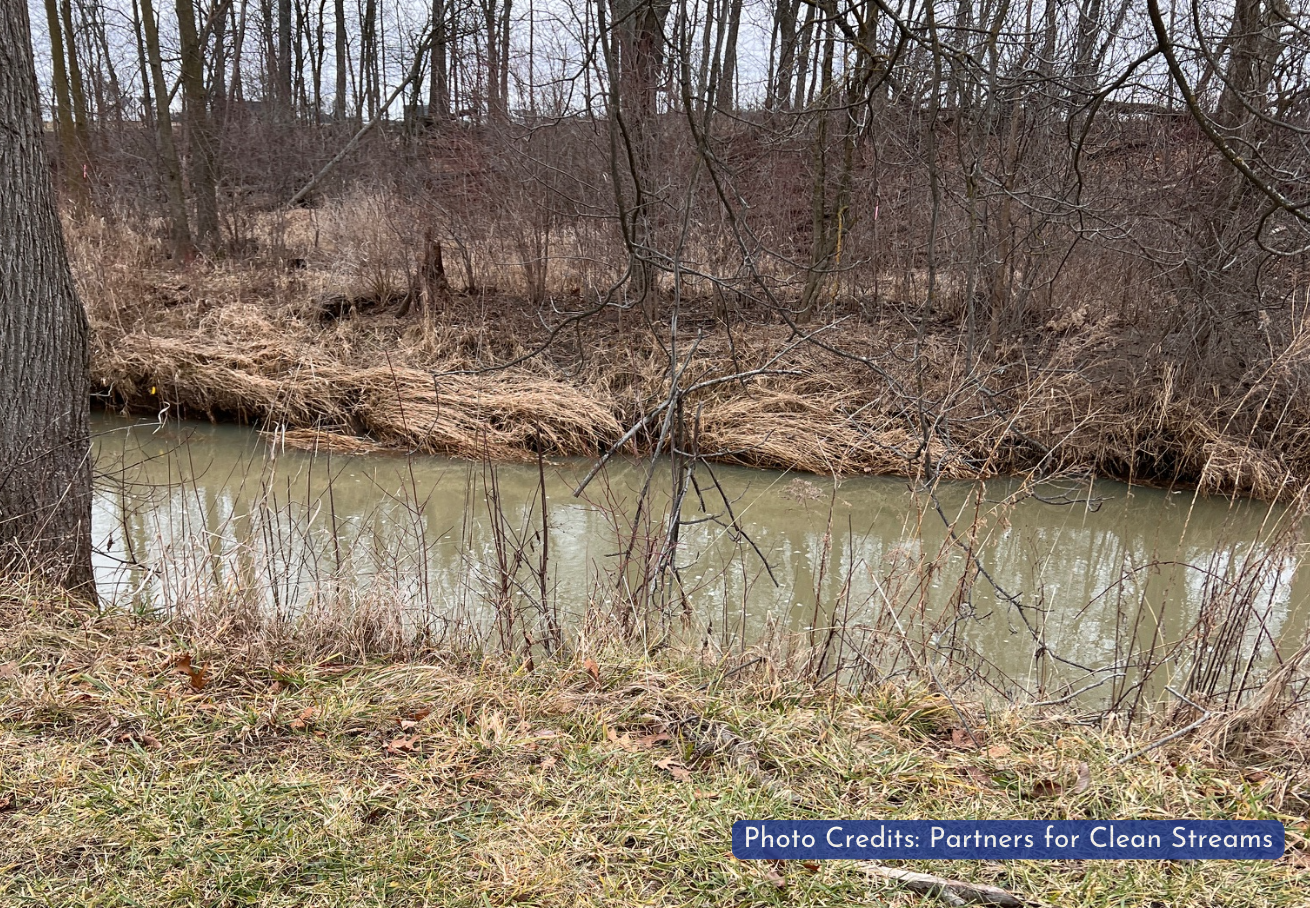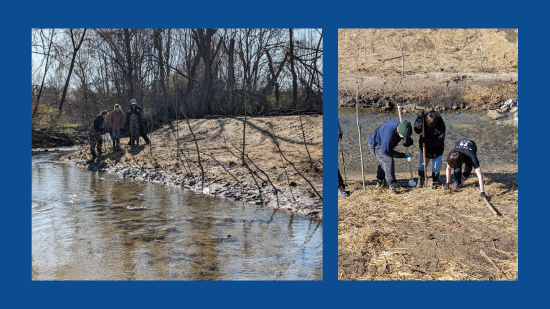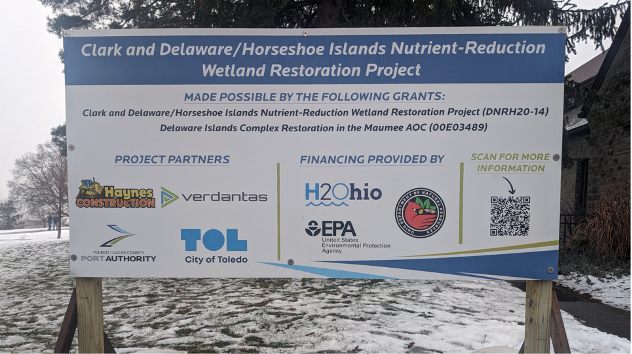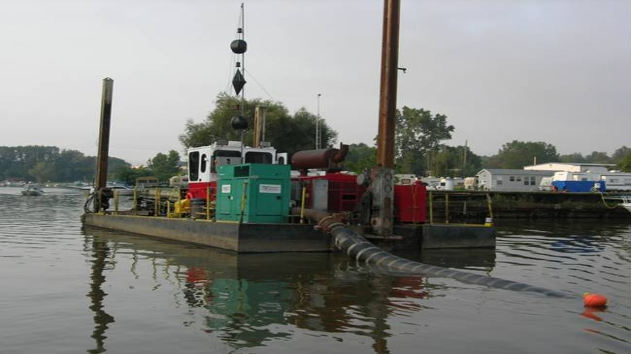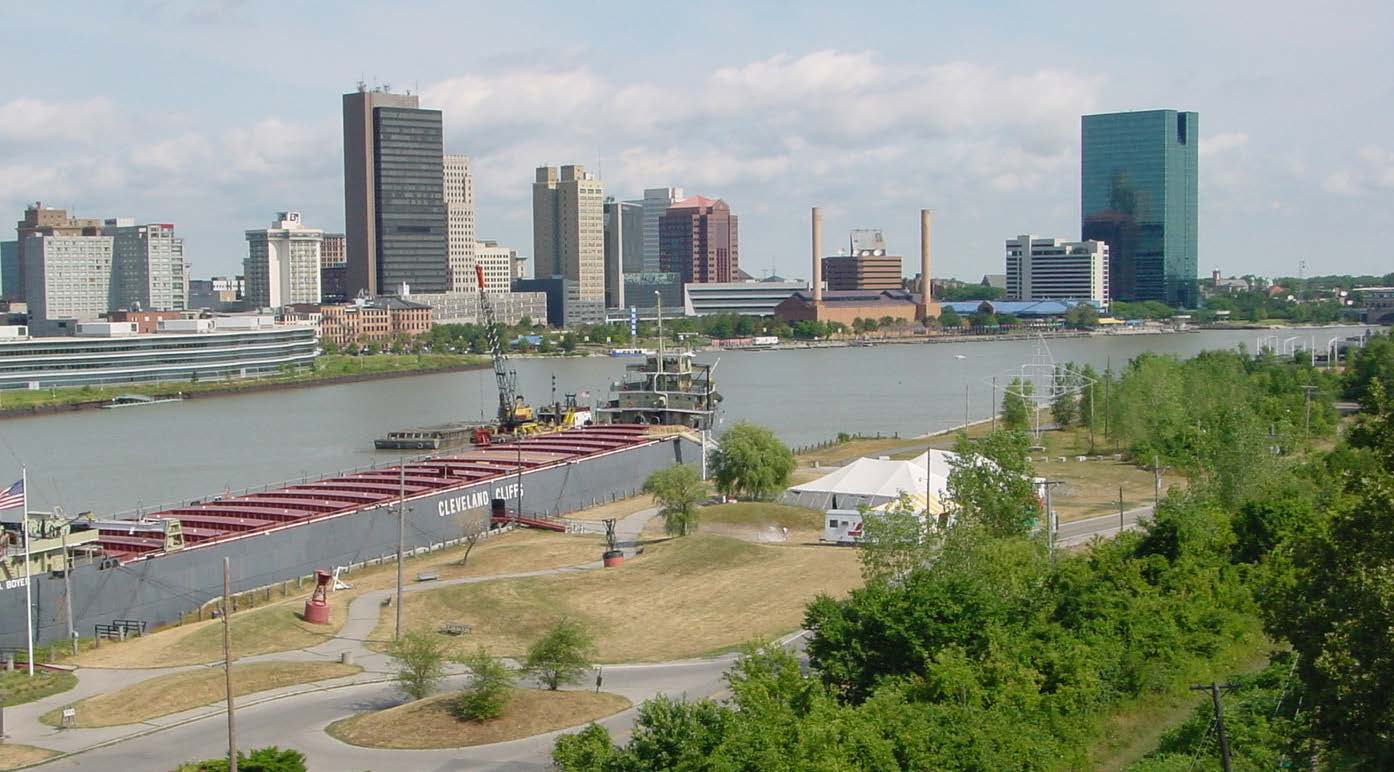Welcome to Partners for Clean Streams Sites. This is your first post. Edit or delete it, then start writing!
Join the Maumee AOC Advisory Committee (MAAC)
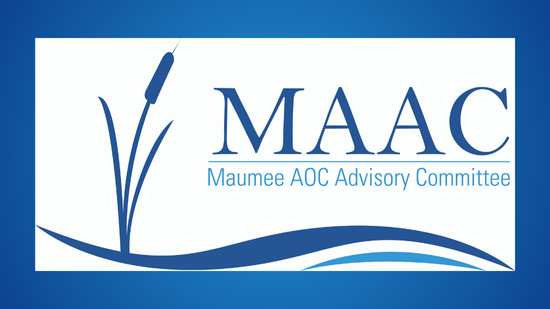
The Ohio EPA and Partners for Clean Streams invite passionate individuals to apply for the Maumee AOC Advisory Committee (MAAC). Find the application here.
If you’re committed to enhancing our region’s ecosystem health, we encourage you to get involved. MAAC advises state and federal partners on key projects to improve the Maumee Area of Concern (AOC) and represents community voices.
In the coming year, MAAC will work with the Ohio AOC Program to assess and address Beneficial Use Impairments (BUIs), raise awareness and increasing participation in communities facing higher environmental burdens, assist with the development and implementation of management action projects (MAPs) and assist with the 2025 Great Lakes AOC Conference. We play a vital role in engaging the community and ensuring public input in restoration efforts.
To apply for voting membership, please review the Expectations and Considerations for MAAC members on page 2 of the application packet. Non-voting Ex Officio and Resource Members can express their interest via email without a formal application. Submit your application form and any required letters of support by midnight Tuesday, November 12, 2024 to:
MAAC Member Application
c/o Partners for Clean Streams
via email to: [email protected]
Join us in making a difference for the Maumee AOC!
BUI 7 Officially Removed in Maumee AOC!
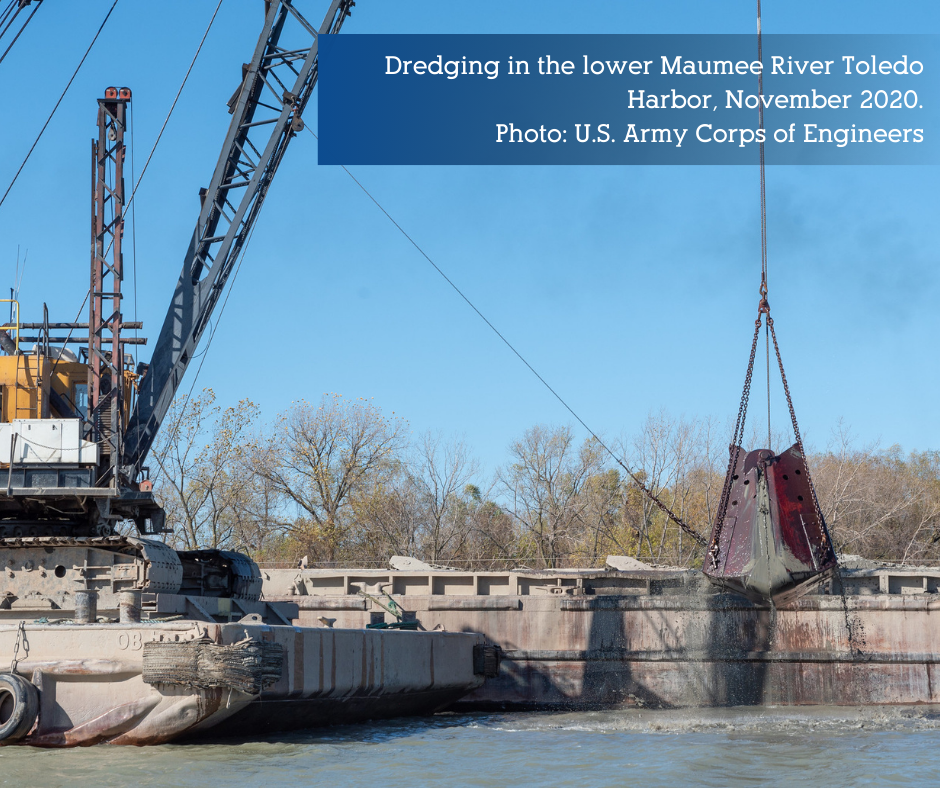
The Maumee Area of Concern and surrounding waterways are making progress towards their restoration goals thanks to recent developments. BUI 7: Restrictions on Dredging Activities has now been approved for removal from the list after acceptance from US EPA and the Great Lakes National Program Office (GLNPO)!
This is the fourth of ten beneficial use impairments (BUIs) impacting local waterways in the Maumee AOC that has been addressed. Due to recently dredged sediment being deemed clean for beneficial use, we are one step closer to delisting the Maumee AOC. Read the acceptance letter here.
The Toledo Shipping Channel, the most heavily dredged in the Great Lakes due to its shallow depth, contributes sediment that is now being utilized for various projects, including tree growth at Glass City Metropark and research at Bowling Green State University.
The ongoing improvements in restoring the AOC and eliminating BUIs are the result of efforts by local stakeholders, organizations, and state and federal AOC programs. Thank you to everyone who made this possible!
The full Removal Recommendation document can be found here, or by visiting the Resources page of https://maumeeaoc.org/.
Project Feature: Stream Restoration at Lathrop Park
Starting in 2021, a stream restoration project was developed for Lathrop Park located in Berkey, Ohio. The proposed work for this project includes restoration of 0.75 acres of riparian buffer, stabilization of 600 feet of eroding streambank, creation/enhancement of 165 feet of riffle habitat, restoring a riffle-pool sequence across the site, and enhancing in-stream habitat with locked logs, rock, and native plantings. These efforts are to address BUI 6: Degradation of Benthos and BUI 14a: Loss of Fish Habitat.
Grant funding for this project was awarded through US EPA’s Great Lakes National Program Office (GLNPO) from the Great Lakes Restoration Initiative (GLRI) to Ohio EPA. Partners for Clean Streams (PCS) was subawarded funding from Ohio EPA to assist in the engineering, design, and implementation of this project. As of April 2024, Katarina Kieffer has been appointed the new project lead for PCS as former Executive Director of PCS, Kris Patterson, has transitioned to a new role with the Ohio Lake Erie Commission.
PCS hired the Davey Resource Group (DRG) to collect data/survey the existing conditions, develop a final engineered design and obtain permits. All of which has been completed. Moving forward, DRG will be working with The Stanger Group to get construction underway during the summer of 2024. An initial round of tree and woody material removal was completed in March, as well as fact sheets and project FAQs mailed to Village of Berkey residents to inform them on the important work being done to the area. Invasive species control is also expected to be completed this Spring. The restoration elements of this project will enhance fish and benthic habitat by increasing stream shading, diversifying habitat elements, adding and enhancing riffle habitat, and by reducing bank erosion and subsequent siltation and embeddedness of stream substrate.
For more information, visit the Data Management & Delisting System (DMDS) page for this project: Stream Restoration at Lathrop Park (MAP HTC -12.2).
Toledo Public Schools Students Help with Hill Ditch Restoration Project
The Hill Ditch Restoration at Toledo Natural Science Technology Center project is nearly complete! These efforts focused on creating instream and floodplain habitat for fish and benthos by stabilizing streambanks against erosion, targeting BUI 6 and BUI 14a.
This site is utilized by Toledo Public Schools and their Natural Science Technology Center (NSTC) as an outdoor lab for their students. On March 25, 2024, the students of the NSTC took part in a live stake harvesting event where they collected over 500 willow and dogwood stakes. The stakes were then installed on March 28th at the project site. These stakes will aid in the stabilization of the bank and create improved habitat for the aquatic species that live in this stream.
April showers have put the new additions and restoration efforts to the test, but everything is holding up well! Outdoor lab activities conducted by the school have been able to take place again, and the NSCT students are able to see their hard work in action.
Clark Island and Delaware/Horseshoe Islands Water Quality & Habitat Improvement Projects

The beginning stages of construction for the Clark Island and Delaware/Horseshoe Islands restoration projects are underway! Construction of the first temporary construction causeway began on January 8, 2024. Construction groundbreaking celebration events were held on January 23 that included a media event with speakers followed by an open community reception. The community has demonstrated their interest and support for these projects throughout every phase of the project and team members estimate that around 90 people attended the groundbreaking events.
Mark Haynes Construction was selected by the Port Authority to be the construction contractor for both projects. State and federal funds totaling $13.5 million are dedicated to efforts to improve and restore the 63+ acres for this set of islands. This is the largest known habitat restoration investment in the Maumee River. At the state level, ODNR dedicated $8.146 million through the H2Ohio Program to design and construct portions of this project. Federal contributions from U.S. EPA through the Great Lakes Restoration Initiative (GLRI) provided $5.4 million for design and construction activities. Though funding is coming from separate sources, the integrated and complementary projects will restore and positively impact the islands and surrounding areas. Leading the efforts are Toledo-Lucas County Port Authority and the City of Toledo, with input from ODNR and Ohio EPA, and additional support from the Maumee Area of Concern (AOC) Advisory Committee (MAAC).
The GLRI-funded activities will improve habitat for fish and benthos, as this is the primary focus of the management action project. The restoration will span across an improvement area of approximately 50 acres on the Delaware/Horseshoe Islands. Within this 50-acre footprint are 12 acres of regraded and enhanced wetlands and 29 acres where phragmites will be managed. Alongside the wetlands area, features of the GLRI-AOC project will also include Rock Barrier Reef/Vegetated Stone Sill, Cove Improvements, Open Water Enhancements, and Invasive Species Management. A portion of the original island footprint will be restored, thus improving habitat for fish, aquatic organisms, and upland wildlife that call the Maumee River their home. The planned barrier reef and sill will allow for calmer, open water habitat that will also help protect the area from boat wakes, river flows and ice scour. Since water levels of the river can vary, the proposed cove improvements will be contoured to accommodate shifting water levels and habitat needs. Other bottom substrate, along with wood/rock installments, will further enhance fish and macroinvertebrate habitat.
Plans for the H2Ohio-funded activities will primarily focus on nutrient reduction through sediment settlement and plant uptake. This project will occur across approximately 13.6 acres in the downstream portion of Delaware/Horseshoe Islands and Clark Island in its entirety. Of the 13.6 acres enhanced in this project, 6.9 acres are wetlands, which is just over half of the area. In addition to the wetland area, the H2Ohio project features will also include an Open Backwater Area, Island Revetment, Inner Channel Reef, and Breakwater/Backwater Islands. To create an ideal area for sediment deposition, the contractor will establish an interior, protected open water area and install a rock revetment to better protect the improved area from harsh river conditions. Other installments in this area will include stone and wood structures as well as small islands that will provide habitat for the native wildlife while contributing to a slower flow of water to encourage sediment settlement.
Overall water quality and habitat improvements will result from these integrated projects. Not only is there a planned reduction in sedimentation and nutrient loading, PCS and MAAC members are also excited for what this means for river inhabitants. Fish, benthos, and other plant and animal communities should now have improved conditions to thrive in their soon-to-be upgraded habitats thanks to the installation of various improvements that include wood/rock structures. Improvements will provide important protection to reduce further island erosion. Boaters, paddlers, anglers, and community members will have improved conditions to enjoy this section of the river thanks to these efforts that promote ecological resilience and that will establish a sustainable future for these islands and the surrounding areas in our beautiful Maumee River.
GLLA Work in the Maumee AOC
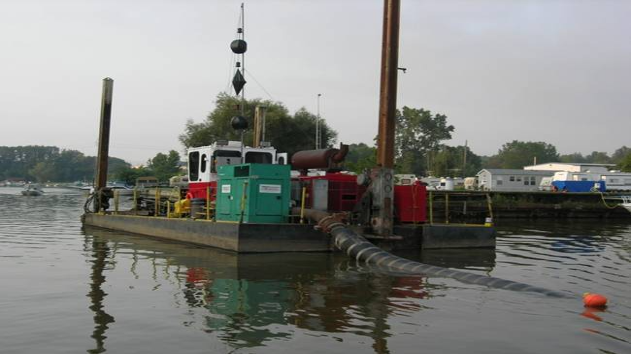
One of the fundamental pieces of improving Beneficial Use Impairments is locating and addressing significant chemical contamination in the sediments in the waterways of the Area of Concern (AOC). Those chemicals of concern in the sediments are often from historical industrial contamination of the past. In the Maumee AOC, there is ongoing Great Lakes Legacy Act (GLLA) projects to identify, quantify, and decide how to address pockets of those contaminated sediments. Those areas have been identified in lower Swan Creek, lower Maumee River mainstem, and an additional pocket in the Ottawa River. The lower Ottawa River and lower Otter Creek already had sediment removal completed.
These legacy sediment contamination projects take many years, from initial sampling to “moving mud” to complete. The next phase of the work for Swan Creek will be publicly releasing a Feasibility Study and pre-Remedial Design. The report is expected in the late spring, and a public meeting will be held to discuss it.
Project Feature: Reducing the Impact of Chlorides
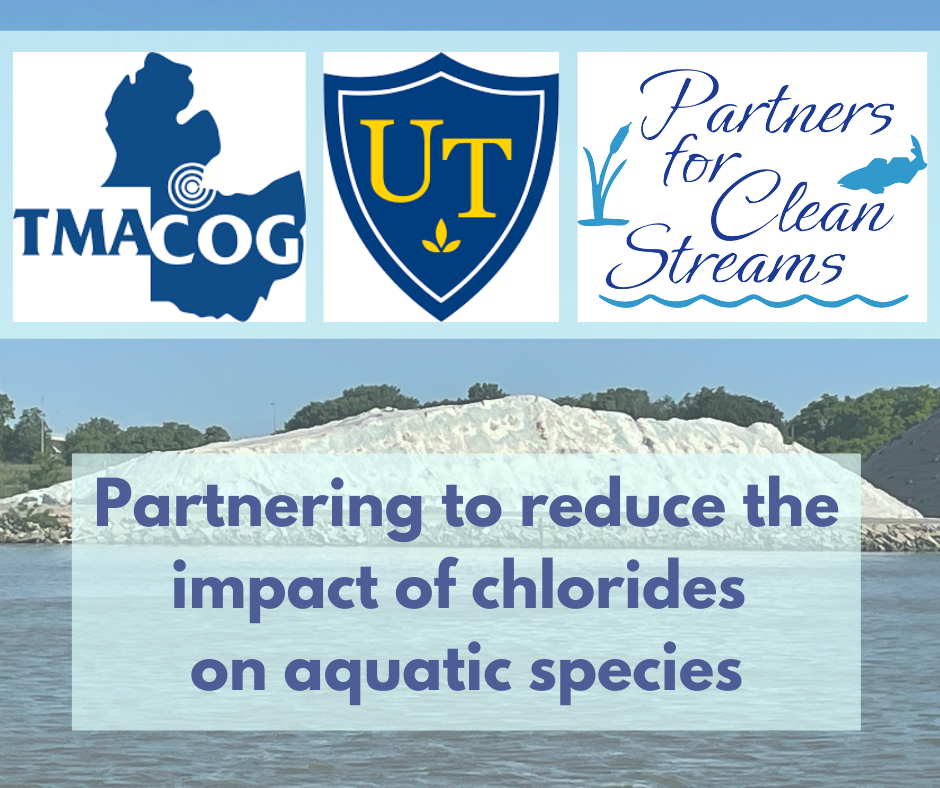
Every winter, rain and snow wash road salt into our ditches, streams, and rivers, which degrades water habitats by adding excess chlorides. Too much salt can be toxic for macroinvertebrates and fish. Experts agree that cutting down pollution at its sources will have a positive impact. Last year, a team of three MAAC collaborators began a multi-phase project to do exactly that, targeting BUI 6 (Degradation of Benthos) and BUI 3a (Degradation of Fish Populations).
In 2021, the Ohio EPA awarded a GLRI grant to the University of Toledo (UT), Toledo Metropolitan Area Council of Governments (TMACOG), and Partners for Clean Streams (PCS), to work together to better understand current conditions of urban streams in the AOC and make recommendations on how to reduce road salt pollution. Phase one of this project is titled “Reducing the impacts of chloride on aquatic species in the Maumee Area of Concern,” and it is underway for three years.
Phase one focuses on developing a suite of best management practices to target specific areas in the AOC that show excess chlorides and severely degraded benthos. UT has focused on extensive chloride sampling and impacts to the streams so that we have a robust and accurate data source to use to pinpoint areas of extreme elevation and degradation. TMACOG is working with local municipalities to identify policies and specific equipment upgrades to reduce salt pollution, and PCS is integrating the proposed projects or equipment upgrades into updated Non-Point Source Implementation Strategies that get approved by Ohio EPA and help connect local entities to future funding and state-wide resources to reduce chlorides impacts to the streams.
Over the next few years, this chloride reduction project will play a role in supporting the removal of BUIs 6 and 3a.
2023 Year In Review
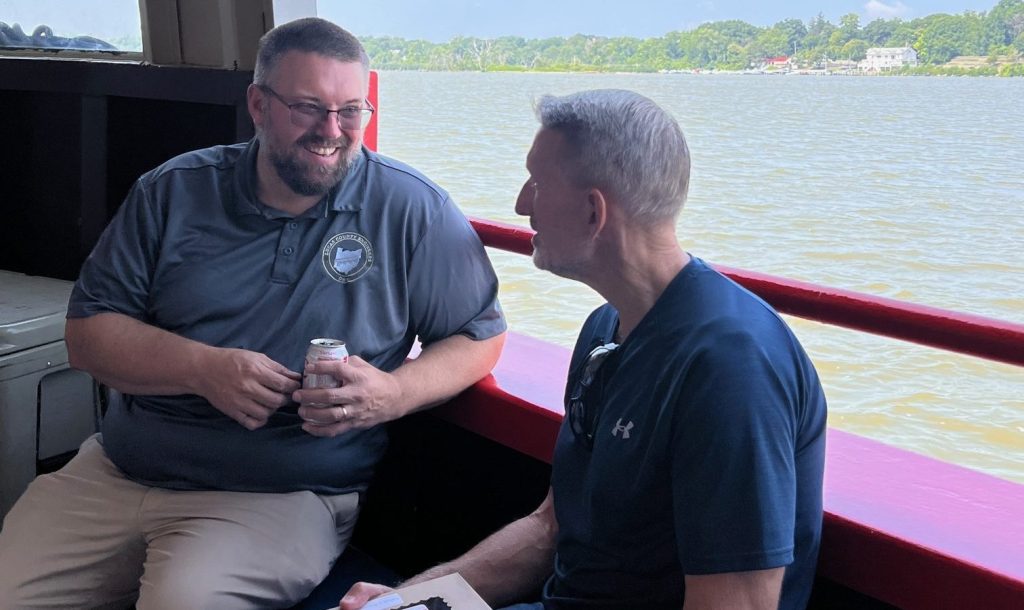
Highlights
- BUI 11: Degradation of Aesthetics was removed.
- Management Action Projects:
- WildMAPs – All 20 of 20 projects are funded, and 18 projects are complete as of November 2023.
- AquaMAPs – 32 of 35 AOC-funded projects are funded and 2 projects (and one partial project) are complete.
- SedMAPs – 3 of 8 projects are fully funded, while the remaining 5 are partially funded. The 3 funded projects are completed as of November 2023.
- The Maumee AOC website was completely redesigned. For the public, the new website focuses on providing accessible explanations of the sometimes-complicated AOC designation and delisting process. For MAAC members, the improved “Resources” page provides a searchable, tag-based database of past meeting materials, project reports, publications, and more. In the future, when all of our BUIs are removed and the Maumee AOC is delisted, this website will smoothly transition into a functional archive of past projects and reports.
Management Action Project Milestones
- U.S. Army Corps of Engineers and EPA Great Lakes hosted a public information session on the Sediment Management Action Project’s proposed plan to clean up contaminated sediment at two sites in the lower Maumee River.
- Several Aquatic Management Action Projects held public information sessions this year to solicit feedback, including Metroparks Toledo’s Audubon Island restoration project, and the City of Toledo’s restoration projects at Collins Park and the Delaware Islands Complex.
- One Wildlife Management Action Project held a public grand opening this year: Cedar Point National Wildlife Refuge’s Gradel Marsh coastal wetlands project.
Public Involvement and Outreach
- MAAC members and guests were invited to join a picnic lunch Maumee River cruise aboard the Sandpiper, where they discussed upcoming management action projects along the Maumee River and got to see a few of the AOC projects from a different perspective on the water.
- Two new Management Action Project website highlights/rack cards:
- The MAAC maintained a robust social media presence throughout the year on Twitter / X and Facebook.
- The 2022 Annual Report was published.
U.S. EPA Removes ‘Degradation of Aesthetics’ Impairment Designation from Maumee Area of Concern
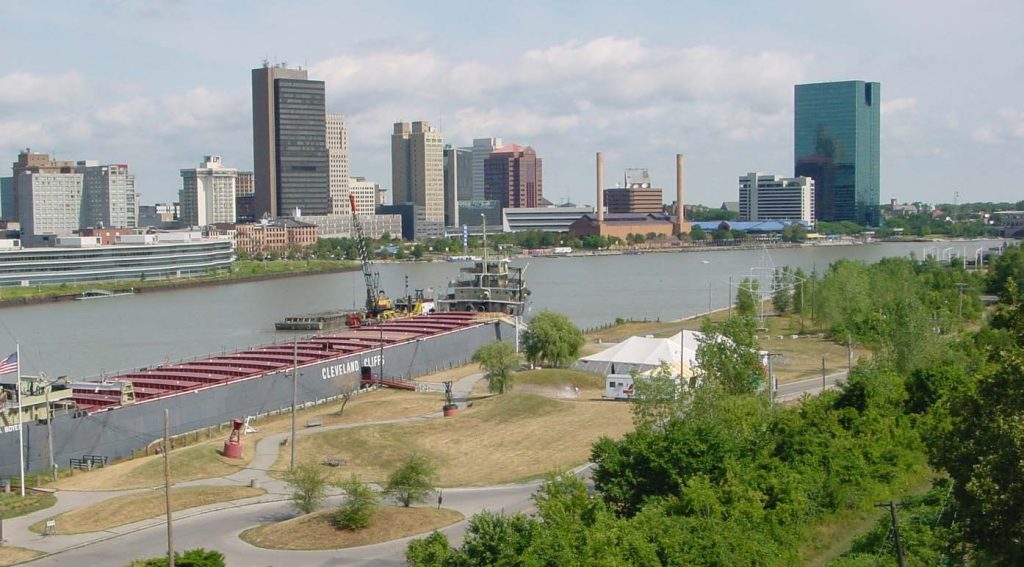
(Via Ohio Lake Erie Commission) Conditions in the Maumee Area of Concern (AOC), one of the largest AOCs in the eight Great Lakes states, have vastly improved over the last 30 years, bringing the Maumee AOC one step closer to full restoration. These improved conditions are a result of reducing sources of oil, grease, and trash through cleanups of contaminated streams. U.S. EPA will remove the “Degradation of Aesthetics” Beneficial Use Impairment (BUI), referring to the appearance or odor of a body of water, which can have significant effects on local communities.
The removal of this BUI was requested by the Ohio Lake Erie Commission (OLEC) and the Ohio Environmental Protection Agency (Ohio EPA) earlier this year. BUIs identify specific problems that can prevent a body of water from meeting its water quality conditions.
“We are pleased U.S. EPA has declared another beneficial use impairment can be removed from the Maumee AOC,” said Mike Pniewski, Maumee AOC Advisory Committee chair. “The removal is the result of the significant teamwork of project partners, restoration advocates, local governments, Ohio EPA, and U.S. EPA. We look forward to the continued work from all our stakeholders in the future delisting of the Maumee AOC.”
“It’s exciting to see the State of Ohio and the local AOC partners making progress to address the historic pollution in the Maumee River watershed. All communities deserve clean and safe water,” said Joy Mulinex, Executive Director of the Ohio Lake Erie Commission. “Thanks to continuing support from the U.S. EPA, we will continue to undertake restoration projects to move closer to delisting the Maumee River as an Area of Concern.”
In 1990, the Maumee AOC Advisory Committee identified 10 BUIs that needed to be addressed. With the removal of the aesthetics impairment, now three BUI’s have been addressed including “added costs to agriculture or industry,” and “restrictions on fish and wildlife consumption” BUIs. These beneficial use impairments have been removed because of restoration goals being met across the 787 square mile AOC which includes several watersheds draining to Lake Erie.
In May 2023, OLEC and Ohio EPA invited public comments as part of the removal recommendation process. A response to the public comments is provided in the final BUI removal recommendation along with a letter of support by the Maumee AOC Advisory Committee. OLEC and Ohio EPA will continue to work toward the removal of the remaining BUIs with local AOC partners. As each BUI removal goal is met, OLEC, in partnership with Ohio EPA, will notify the community to seek public input and submit additional BUI removal recommendations to U.S. EPA.
Photo Credit: Bryce Blair Jr, via Removal Recommendation for Degradation of Aesthetics Beneficial Use Impairment in the Maumee AOC

